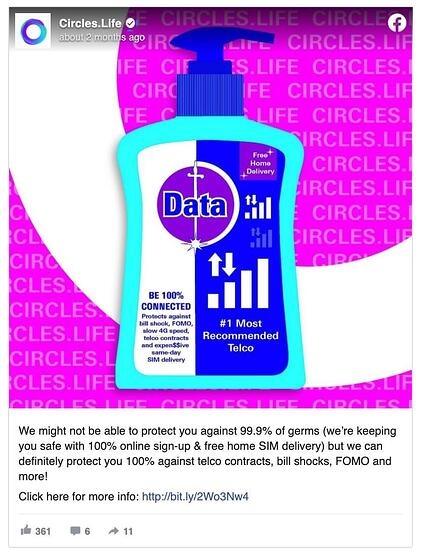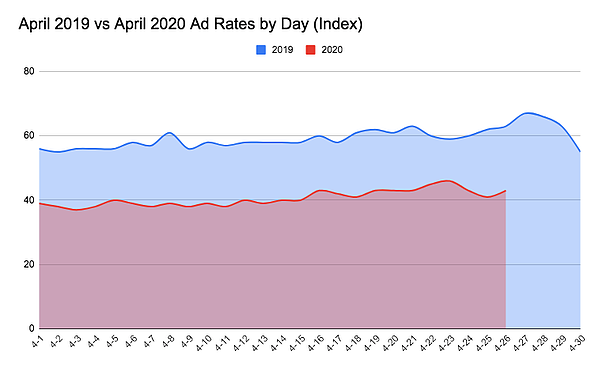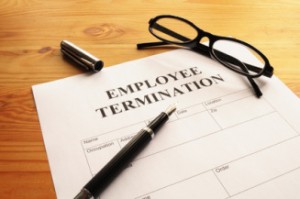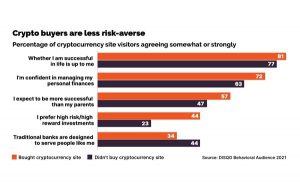With COVID-19 lockdowns ending, you have to create a plan to get back on track. Follow these 13 tips to tackle the post-lockdown world.
After weeks, lockdowns are slowly being lifted around the world.
And businesses around the world are asking the same question: Now what?
Do you continue business as you did before? Or do you bunker down and keep working from home?
The simple and plain answer is that nobody knows. A situation like this is unprecedented; there are no playbooks for weathering through a once-in-a-century pandemic.
To make things a little clear, we’ve put together this list of 21 tips you can follow to ease out of the lockdown.
Keep in mind that these tips are neither definitive, nor universal. When in doubt, rely on your local authorities for guidance.
1. Accept that ‘normal’ isn’t coming back soon
Hard realism is the first antidote to hysteria. And the hard reality is that ‘normal’ isn’t coming back anytime soon.
Sure, some businesses will open and some offices will restart their 9 to 5, but much of this new reality will be a little aberrant. You’re unlikely to see international events, large public gatherings, and even packed subways happen in the near future.
The definition of ‘normal’ is going to change – at least for a while. Accept it and find ways to make the best of the new situation instead of forcing the old ways back.
2. Survival and transformation
Your first priority should be to survive. If you can retain your employees and clients while still keeping some cash in the bank, you’ve already won half the battle.
But survival isn’t enough. All it will ensure is that you enter the new post-COVID paradigm underprepared.
To truly thrive, you must transform your business as well. You have to be leaner, more agile, and more mobile than ever to thrive in the future.
3. Get help
Most governments around the world have rolled out initiatives to help businesses stay afloat during this crisis. This includes loans, grants, and deferment of taxes and accrued interest.
Tapping into these resources should be your top priority. The terms of these loans tend to be quite lenient and can help you through any immediate funding needs.
Look at programs at the federal, state, and local levels.
4. Acknowledge the crisis to all stakeholders
There has been a tendency among agencies to defer or even ignore the COVID-19 crisis, especially in their client brand campaigns.
It’s easy to see why you would take that tack – you’re not a medical advisory and have no real business talking about COVID-19.
But radio silence – to clients and the customers they serve – can be seen as willful ignorance. At the very least, you want to acknowledge to every stakeholder that:
- You’re aware of the situation and you empathize with their issues
- You’re working to mitigate any problems they might be facing – within your capabilities, of course
- You’re following experts recommendations to keep everyone safe
You don’t have to be cheerful – a simple message that says “We understand” goes a long way.
Speaking of being cheerful…
5. Avoid being overly optimistic – or pessimistic
Over the last few weeks, I’m sure you’ve received countless emails and messages from brands with a cheerful, overly optimistic take on the COVID-19 crisis.
While we’ll talk about the futility of such generic COVID-19 campaigns later, what you should really avoid is borrowing the same cheery tone. Overt optimism might sound like a good marketing plank, but it comes across as tone-deaf to people who have suffered through the crisis.
The obverse is equally true as well – pessimism is never a good strategy, crisis or no crisis.
Instead, be realistic with a dash of optimism. When talking to clients and employees, share the facts, avoid speculation, and always close with a message that you will emerge from this stronger, better.
6. Establish communication guidelines
You’ve already been talking to clients and employees about the pandemic. Now is the time to formalize this communication through clear guidelines.
These guidelines should cover:
- Your tone for all official communication, especially on social media
- If employees are talking to clients about COVID-19, what they can or should talk about, as well as what sources they refer to
- Your guidelines for creating any content related to COVID-19 (such as a post-COVID marketing guide). This should also include guidelines for vetting any unsubstantiated claims
These guidelines don’t have to be exhaustive – you’re an agency, not a medical advisory. But it is still important to establish standards, especially at a time when unverified claims and rumors abound.
7. Protect your employees
Your first priority should be to protect the people you work with: your employees. Safeguard their health and ensure that they have minimal exposure to any risk.
Here are some ways to make this possible:
- Unless absolutely necessary, ask people to work from home as long as feasible
- Identify vulnerable employees (asthma patients, older employees, employees who must commute via risky public transport, etc.) and ask them to work remotely even once lockdowns are lifted
- If you’re reopening your office, ensure that you create a safe and welcoming environment for everyone. Limit overcrowding of closed spaces (elevators and meeting rooms in particular), offer hand sanitizers, and regularly sanitize shared spaces like cafeterias.
- Create an emergency plan for tackling any issues. If someone on your staff is infected, ensure that proper quarantine procedures are followed as per your local guidelines.
How you treat your employees during a time of crisis will go a long way towards building your employer brand. The agency world is small; if you earn a reputation for being callous, you’ll have a tough time attracting top talent in the future.
8. Deal with vendors and freelancers
As an agency, you likely work with a number of contractors, vendors, and freelancers. While your first priority should be to safeguard your full-time employees, it’s also important to retain these contractual partnerships.
Retaining contracts, even at minimal value, can help vendors and freelancers tide through the crisis.
You don’t have to do this for every contractor – identify your top talent and prioritize them first. Offer them whatever work you have currently available. If not, at least offer them a hard promise of renewing the contract in better times.
Contractual workers are particularly vulnerable in times like these. A gesture of loyalty will earn you a great deal of trust and goodwill in the future.
9. Don’t waste time on generic COVID-19 campaigns
Search for “covid” on Twitter and you’ll invariably find brands using COVID-19 in their campaigns in hamfisted ways. Some of it is naive, some of it distasteful, but nearly all of it is a waste of time.

Brands using COVID-19 to pitch their products can come across as distasteful and opportunistic (Image Source: PRWeek)
Unless you can add substantial value, a generic COVID-19 campaign does not do anyone any good. Most likely, it will get drowned among the sea of similarly themed campaigns.
Some of your clients might be pushing you to tap into this trend, but resist. Unless you can say something important, it will just go unheard.
10. Rework sales and networking strategies
With most international borders closed and curbs on the movement of people, you’re not going back to the days of face-to-face sales and networking meetings anytime soon. Whatever ad-hoc tactics you might have adopted during the lockdown – Skype calls, Zoom meetings, etc. – will likely stick around for a while.
In that case, now is a good time to formalize these ad-hoc measures.
Answer the following questions in particular:
- How has COVID-19 affected the quality and volume of leads from different channels? Has there been an upsurge in some channels compared to others? If yes, should you redistribute your marketing budget?
- What tools have you been using so far to host sales calls? Are they performing up to expectations? If not, shortlist some other tools to test. Incorporate the best ones into your sales strategy.
- How did potential clients respond to virtual sales meetings? Did the experience approximate a real, in-person meeting? Or did you encounter resistance?
- Have you attended or hosted any remote networking events? Was the experience subpar or up to expectations? In terms of takeaways, how did it compare to in-person events?
This has been a time of trial and error for most of us. Virtual networking events – which are mushrooming everywhere these days – might not really work for some people. If that’s the case, discarding them from your sales strategy might be a better idea than wasting time.
Likewise, some clients will be resistant to virtual sales. They might struggle with technology, not be comfortable with video, etc. In such cases, you have to ask: how much should you persist with virtual sales? Is it better to focus on building the pipeline and only targeting leads that are comfortable with virtual sales meetings?
If curbs on movement are going to continue, you will have to reconfigure your expectations. Now is the perfect time to do it.
11. Pitch the right campaigns
Speaking of sales, this is a great time to push long-term marketing strategies such as SEO and content marketing. These strategies typically take several months to ramp up, but tend to be cheaper than paid approaches.
At a time when businesses have little money (or customers) but plenty of time, cheaper and long-term strategies can be the perfect fit. Make them a priority in your sales pitches and you might be surprised by the results.
If your clients have the risk appetite (and cash reserves), paid brand campaigns can also be a great idea right now. Ad rates have dropped as much as 30% even though consumption has gone up.

Ad rates in April 2020 are down nearly 20% YoY, according to Ezoic (Source)
For cash-rich clients, this is a great time to buy quality inventory. You might not see the results immediately, but the brand building will help later when things return to normal.
There has also been a massive flight of attention to eSports during the lockdown. This is a new, largely untapped medium. For clients with the right audience fit, tapping this medium can yield big results.
The COVID-19 age calls for some innovative thinking. Tapping new mediums, pursuing long-term strategies, and locking in historically low ad rates are some ways you can help your clients come out ahead.
12. Practice extreme accountability
Make no mistake – if you’re hurting, so are your clients. Even if they haven’t voiced their concerns, they’re watching each dollar, each impression, each invoice carefully.
Help them out by practicing ‘extreme accountability’. Your clients should know exactly what their money bought them. Keep waste to a minimum and your employees accountable for their time.
If nothing else, it shows that you understand their situation. At a time when every business is carefully evaluating their contracts, something as simple as a detailed spending report can help you earn long-term trust.
13. Help others
Last, but never the least, now is the time to step up and help others.
How you do this is entirely up to you. Maybe you can donate to charities, offer free marketing to charitable organizations, or help local businesses free consultations.
Lots of people and businesses need assistance right now. Anything you can do to help would be greatly appreciated.
If you’re looking for charities to donate to, the Wired has a good list here.
There is no fixed rulebook for dealing with a once-in-a-lifetime situation. None of us truly knows how this will pan out. The most we can do is help others, safeguard our employees, and offer clients the trust, honesty, and results they deserve.
Business & Finance Articles on Business 2 Community
(53)






